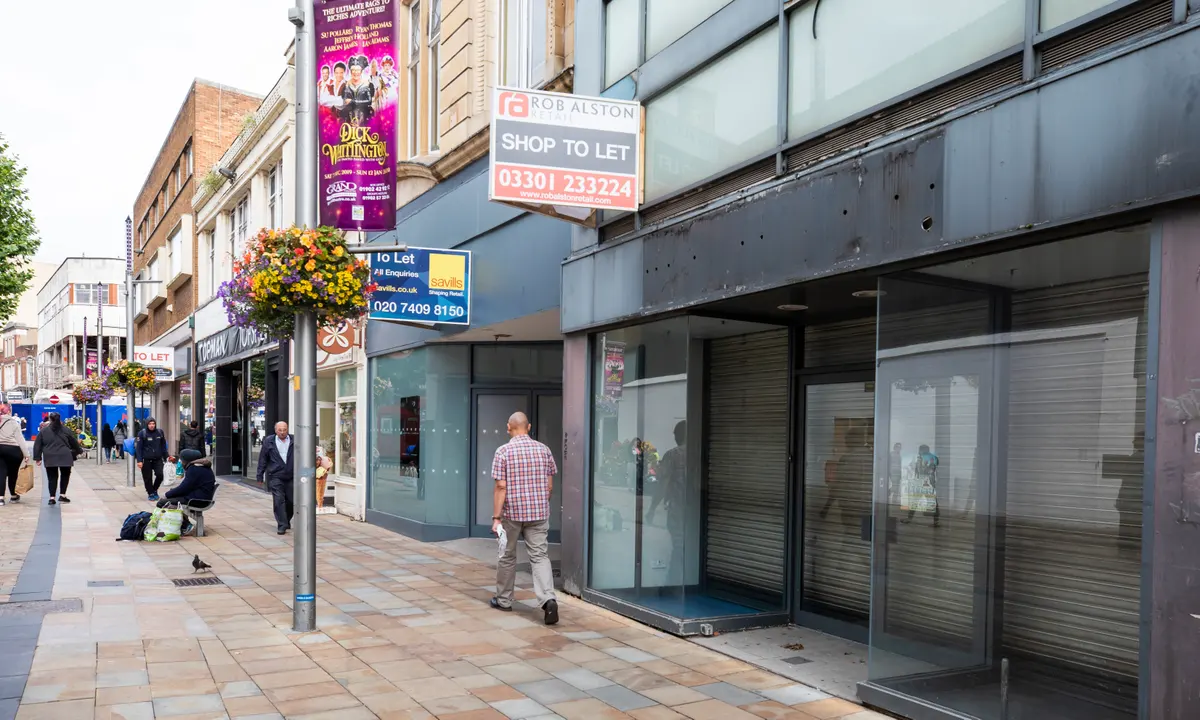London (Parliament Politic Magazine) – The British Retail Consortium has identified several factors contributing to the current challenges faced by businesses. These include the burdensome business rates, the ongoing cost of living crisis, and the unprecedented impact of the COVID pandemic. New figures reveal that Britain has witnessed a staggering loss of 6,000 storefronts over the course of five years.
Financial burdens have compelled shop owners to shut down their businesses, leaving cities with unappealing and incomplete high streets, resembling gap-toothed smiles. The detrimental impact of COVID the escalating cost of living crisis. Moreover, the burdensome business rates have collectively driven businesses away from retail spaces.
The Steady Shrinkage of Retail Landscape in UK
The UK loses 6,000 retail outlets in five years as many shops are shutting down. In light of this alarming trend, the British Retail Consortium (BRC) has issued a stern warning, emphasizing the urgent need for local councils to devise a comprehensive and unified strategy to revitalize shopping areas.
According to the vacancy monitor by the BRC’s Local Data Company (LDC), the overall vacancy rate in Britain rose to 13.9% in the second quarter of this year. Although this represents a slight decrease of 0.1 percentage points compared to the first quarter, it is still 0.1 points higher than the same period last year.
While shopping centre vacancies remained steady at 17.8% from the first quarter, there was a slight increase of 0.1% in high street vacancies, bringing them to 13.9%. These figures indicate a concerning trend in the retail sector, with a significant number of commercial spaces remaining unoccupied. It is crucial for stakeholders in the retail industry to address this issue and explore innovative strategies to revitalize these vacant spaces.
How Retail Sector Lost 6,000 Outlets in Just Five Years
Greater London, the South-East, and the East of England have consistently maintained the lowest vacancy rates. London, in particular, has shown significant improvement over the last quarter, attributed to the opening of new flagship stores and an increase in both office workers and tourists. Conversely, the North-East and the Midlands experienced the highest vacancy rates, closely followed by Wales and Scotland.
The Chief Executive of the British Retail Consortium (BRC), Helen Dickinson, has highlighted a concerning trend over the past five years. During this period, Britain has witnessed the closure of a staggering 6,000 retail outlets. This unfortunate outcome can be attributed to the burdensome business rates and the profound repercussions of the COVID lockdowns. These factors have played a pivotal role in influencing retailers’ decisions to shut down existing stores and exercise caution when considering new ventures.
BRC chief executive, Helen Dickinson has revealed: “To inject more vibrancy into high streets and town centres, and prevent further store closures, the government should review the broken business rates system. “Currently, there’s an additional £400m going on retailers’ bills next April, which will put a brake on the vital investment that our towns and cities so desperately need.
Read More: UK Firms Boost AI Investment As Businesses Confidence Remain Strong
Britain’s Retail Crisis Claims 6,000 Outlets in Five-Year Period
The recent government announcement regarding the simplification of changing the use of vacant units is a positive development. However, it is crucial for local councils to have a well-coordinated plan in place to avoid leaving high streets with empty spaces that are no longer attracting customers and may become economically unviable. In fact, the government should take it a step further and consider freezing rates bills next year.
In Camden, London, a closed shop stands as a symbol of the challenges faced by retailers. Local leaders in the UK are now asserting that up to 40% of shops need to be repurposed within the next five years. This highlights the urgency to revitalize retail destinations by redeveloping units.
Lucy Stainton, the commercial director at the LDC, emphasizes the critical levels of vacancy across all types of locations. This underscores the growing need to breathe new life into retail destinations through unit redevelopment. Unfortunately, given the ongoing trend, it is unlikely that vacancy rates will improve in the future.
However, the recent increases in vacancy have not been significant, leading us to anticipate that any future increases will be gradual. The British Retail Consortium (BRC) confirms that this particular retail space maintains the lowest vacancy rate by a significant margin.


